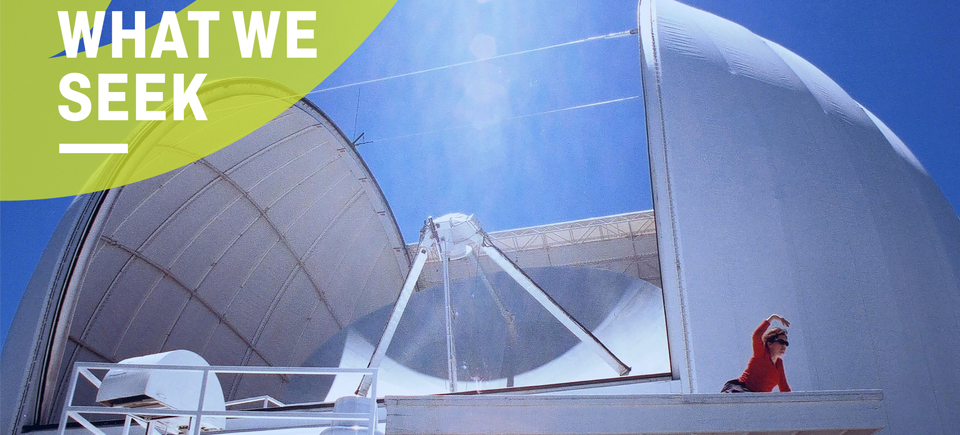
Science and Technology Throughout History
Science and Technology Throughout History
This week, we’re looking at science and technology through NFB films. There is so much happening in this realm, and things change so quickly, that its super helpful to have a series of films that explains concepts, theories, and possibilities. But to write this post, I decided to go a different route. Rather than look at where we’re heading, I decided to look at where we’ve been.
Through these 5 films, we get some great historical perspective on everything from evolution to atomic energy, from our galaxy to feats of modern engineering. The films are half animation, and half live action. One film even combines the two forms in one.
The beauty of science is that we’re always discovering new things, and as we do, we can alter what we know and update our information. From that perspective, it’s also fun to see what beliefs we once held, and how they’ve been replaced by modern thinking.
From the Big Bang to Tuesday Morning
Before I say anything else about this animated short, I have to say hats off to Pierre Desrochers on a brilliant soundtrack. The music is so perfectly suited to this film it’s just a joy to watch… and listen to.
The film itself, by Claude Cloutier (Carface), is an animated romp through the evolution of life on earth. And it’s done as only Cloutier can do it, filled with beautiful drawings and absurd humour. It starts slow, and it feels like we spend a lot of time underwater, but then the pace picks up and we’re carried along on a swift current through evolution. You just can’t help but get swept up in it all.
And that’s why I find the ending so devastating. I literally get a sick feeling in my stomach each time I hit the credits. So much had to happen over so much time for us to be here today, and yet we take life for granted, instead of treating it like the gift it is.
This film is not only a trip back through time, it’s a warning about our future.
From the Big Bang to Tuesday Morning, Claude Cloutier, provided by the National Film Board of Canada
Life and Radiation
The fun thing about having a film collection that dates back to 1939 is that you get these great time capsules, like this short doc, for example.
This is a film that aims to demystify the concept of radiation for the masses. Centered around the traditional talking head/interview format, it also throws in some short, reported pieces on the different kinds of radiation that the film addresses.
Among these are sunlight, x-ray, and nuclear radiation. On one hand, it’s fascinating to hear about these topics from a 1960’s perspective. On the other, it’s crazy to hear the narrator talking about the need for sun protection, while a guy lounging on the sand covers his face with his book. Yes, sunscreen existed, but it clearly wasn’t in widespread use in those days.
This is some serious old-school science.
Life and Radiation, Hugh O’Connor, provided by the National Film Board of Canada
Cosmic Zoom
This is an awesome film that uses the art – and magic – of animation to take us from the farthest reaches of the galaxy right down to the tiniest living organism. Done entirely without words, the film manages to tell the story of the universe in under 10 minutes.
I was once at Hampton Court Palace in the UK, and there was an exposition of drawings from Leonardo Da Vinci – bird’s-eye view drawings made before anyone had ever been up in a plane. That really blew me away. This film is a lot like that. Once you’ve wrapped your head around the fact that it was made in 1968, you get a true appreciation of what’s going on in this film.
We start out simply enough, a boy and his dog out for a canoe ride on the lake. But then we zoom out, further and further, until we’ve reached the very edge of the galaxy before zooming back through space to that exact same spot on the lake. Once back, we take the trip again, but instead of going outward, this time we head inward. Yeah, science!
Cosmic Zoom, Robert Verrall, provided by the National Film Board of Canada
Victoria Bridge: The 8th Wonder
I selected this film because I thought there should be at least one film focused on technology in my Science and Technology post. Little did I know when I started watching it that it would propel me back to my high school days, listening to my two favourite local DJs on the radio.
With the help of Terry Dimonte, Patti Lorange (Peppermint Patti), and Rick Leckner, the film pays tribute to Montreal’s Victoria Bridge, which was once known as the 8th wonder of the world. Why? Because at the time of construction it was the longest bridge built and considered a marvel of modern engineering. Built in the 1850s, it was the first bridge to span the St. Lawrence River.
Aside from commentary on the bridge’s construction and subsequent impact on society, the film also features some great paraphernalia from the bridge’s inauguration in 1853. It was a huge deal, and included some very important guests, like the bridge’s namesake, HRH Queen Victoria. And in further evidence of the fact that the more things change, the more things stay the same, the event was commemorated with a wide variety of tie-in products… like Victoria Bridge perfume. I can’t even imagine what that smelled like!
Victoria Bridge: The 8th Wonder, Michel Choquette, provided by the National Film Board of Canada
Inside the Atom
While this film shares a lot in common with Life and Radiation, this one focuses entirely on atomic energy. It takes us to Chalk River during the 1940s, as scientists worked on the first set of experiments involving atomic energy for medical purposes.
The film presents an odd combination of optimism with foreboding. The music and signage at the beginning are clearly ominous, but the right away the narration plunges into the possibilities for modern science if we’re able to harness atomic energy. At the time, the thinking was that it would replace coal, being nearly 2 million times more efficient.
We get a quick lesson on atoms and electrons, and an overview of Canada as a chief source of uranium, making Chalk River a key player in atomic affairs. But at the same time, we see things that today would make us cringe, like the idea that they tested for radiation contamination at the end of each week, i.e. – once it’s kind of too late.
Perhaps the most interesting part of this film, for me at least, was the absolute declaration that we will never be able to see an atom. That’s the funny thing about science – we make new progress all the time. May I present the Nion Hermes Scanning Transmission Electron Microscope?
Inside the Atom, Jack Olsen, provided by the National Film Board of Canada



